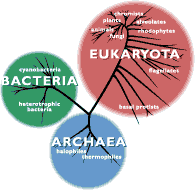recently i got two such boxes... one with worms, one with ladybugs
 this is me holding a bag of 2000 red worms for my compost bin
this is me holding a bag of 2000 red worms for my compost bini am doing vermicomposting in the back yard.
it is awesome!
basically it works like this:
you keep all of your fruit, vegitable, and paper scraps (and tea bags and coffee grounds) in a little bin. each week you feed the scraps to the worms. the worms eat it and make worm poop, which we all now know is the most perfect fertilizer in the world. i bought the can-o-worms
as seen below. it is super easy. turns out that composting is really great for the environment. lots of the kitchen waste that goes to landfills does not decompose because it does not have access to oxygen. landfills are overflowing with perfectly decomposable waste that can't get oxygen! on top of all that, undecomposted organic waste creates methane gas which is messing up the ozone (in ways i don't totally get). but by composting, you send less stuff to the landfill AND get really awesome fertilizer. this can-o-worms allows you to get the liquid worm poop easily. i am doing an experiment now with some plants to see the impact. and you can also get potting soil and fertilizer from the solid castings. basically you get to recycle your garbage.


i put them in the can-o-worms today, but haven't taken photos...and it isn't all that interesting anyway. but here i am with my worms who will now eat about 3 times their weight a day. and awesome fertilizer comes out!
they're also hermaphrodites, so they're having sex ALL THE TIME! soon, my 2,000 worms will be 15,000. at that point, i'll open a worm store.
if you want to just see photos scroll right down. but if you want your mind to be BLOWN read this...
and my friend holly's brother who is a microbiology professor at the citadel says that these archaea are super important for life on the planet. worm poop is filled with archaea, and for whatever reason plants LOVE it and need it.
Introduction to the Archaea
Life's extremists. . .
The Domain Archaea wasn't recognized as a major domain of life until quite recently. Until the 20th century, most biologists considered all living things to be classifiable as either a plant or an animal. But in the 1950s and 1960s, most biologists came to the realization that this system failed to accomodate the fungi, protists, and bacteria. By the 1970s, a system of Five Kingdoms had come to be accepted as the model by which all living things could be classified. At a more fundamental level, a distinction was made between the prokaryotic bacteria and the four eukaryotic kingdoms (plants, animals, fungi, & protists). The distinction recognizes the common traits that eukaryotic organisms share, such as nuclei, cytoskeletons, and internal membranes.
The scientific community was understandably shocked in the late 1970s by the discovery of an entirely new group of organisms -- the Archaea. Dr. Carl Woese and his colleagues at the University of Illinois were studying relationships among the prokaryotes using DNA sequences, and found that there were two distinctly different groups. Those "bacteria" that lived at high temperatures or produced methane clustered together as a group well away from the usual bacteria and the eukaryotes. Because of this vast difference in genetic makeup, Woese proposed that life be divided into three domains: Eukaryota, Eubacteria, and Archaebacteria. He later decided that the term Archaebacteria was a misnomer, and shortened it to Archaea. The three domains are shown in the illustration above at right, which illustrates also that each group is very different from the others.
Further work has revealed additional surprises, which you can read about on the other pages of this exhibit. It is true that most archaeans don't look that different from bacteria under the microscope, and that the extreme conditions under which many species live has made them difficult to culture, so their unique place among living organisms long went unrecognized. However, biochemically and genetically, they are as different from bacteria as you are. Although many books and articles still refer to them as "Archaebacteria", that term has been abandoned because they aren't bacteria -- they're Archaea.
Archaeans include inhabitants of some of the most extreme environments on the planet. Some live near rift vents in the deep sea at temperatures well over 100 degrees Centigrade. Others live in hot springs or in extremely alkaline or acid waters. They have been found thriving inside the digestive tracts of cows, termites, and marine life where they produce methane. They live in the anoxic muds of marshes and at the bottom of the ocean, and even thrive in petroleum deposits deep underground.
Some archaeans can survive the dessicating effects of extremely saline waters. One salt-loving group of archaea includes Halobacterium, a well-studied archaean. The light-sensitive pigment bacteriorhodopsin gives Halobacterium its color and provides it with chemical energy. Bacteriorhodopsin has a lovely purple color and it pumps protons to the outside of the membrane. When these protons flow back, they are used in the synthesis of ATP, which is the energy source of the cell. This protein is chemically very similar to the light-detecting pigment rhodopsin, found in the vertebrate retina.
Archaeans may be the only organisms that can live in extreme habitats such as thermal vents or hypersaline water. They may be extremely abundant in environments that are hostile to all other life forms. However, archaeans are not restricted to extreme environments; new research is showing that archaeans are also quite abundant in the plankton of the open sea. Much is still to be learned about these microbes, but it is clear that the Archaea is a remarkably diverse and successful clade of organisms.
back to photos and neighborhood stuff
ladybug launch '07 had a rough start. i invited daniel and isaac and parents; and xanny and zina and parents (and katie) to the garden for the launch. unfortunately, at the zero hour and final minute of countdown, i discovered that what i thought was a bag of ladybugs was actually seeds and some "organic" pesticide. the kids didn't exactly die of happiness when we opened that bag. so, ladybug launch '07 was postponed due to technical difficulties.
andi took pictures (see independencekids.blogspot.com). i was too embarrassed to do anything other than cower. luckily we had edible packing peanuts.
(andi and family are leaving us for utah. i am trying to silently protest, but it turns out it is not so silent. andi keeps promising me that she will be back in the fall. i really hope she keeps her word!!!!! )
back to beneficial bugs.
i learned a valuable lesson for the second launch attempt: i opened the box BEFORE i went to the garden. and i found ladybugs!!! unfortunately we had fewer kids for the second attempt, but cooler weather.
 daniel wanted to hold the bag the moment he saw it.
daniel wanted to hold the bag the moment he saw it.he was facinated by all these ladybugs.
he just let them crawl all over him
and didn't care at all if they flew in his face







3 comments:
I just LOVE reading about your knew facination with Worm Poop! I hope it is not as messy as Cal's baby poop! Keep the updates coming!
I can't even imagine what my Zina would do with that many bugs crawling all over her. I would have to start the therapy at age two. Hey, you will have to go to my house and knock on the door to see the crazy owners! She has moved back in.
Kimberly,
I just caught your blog through my brother Matt's blog links. It was fun to see and hear what you are up to. Our mssion seems like a really long time ago! Best wishes! Megan Heath (Sister Gardner GLBRM)
Post a Comment